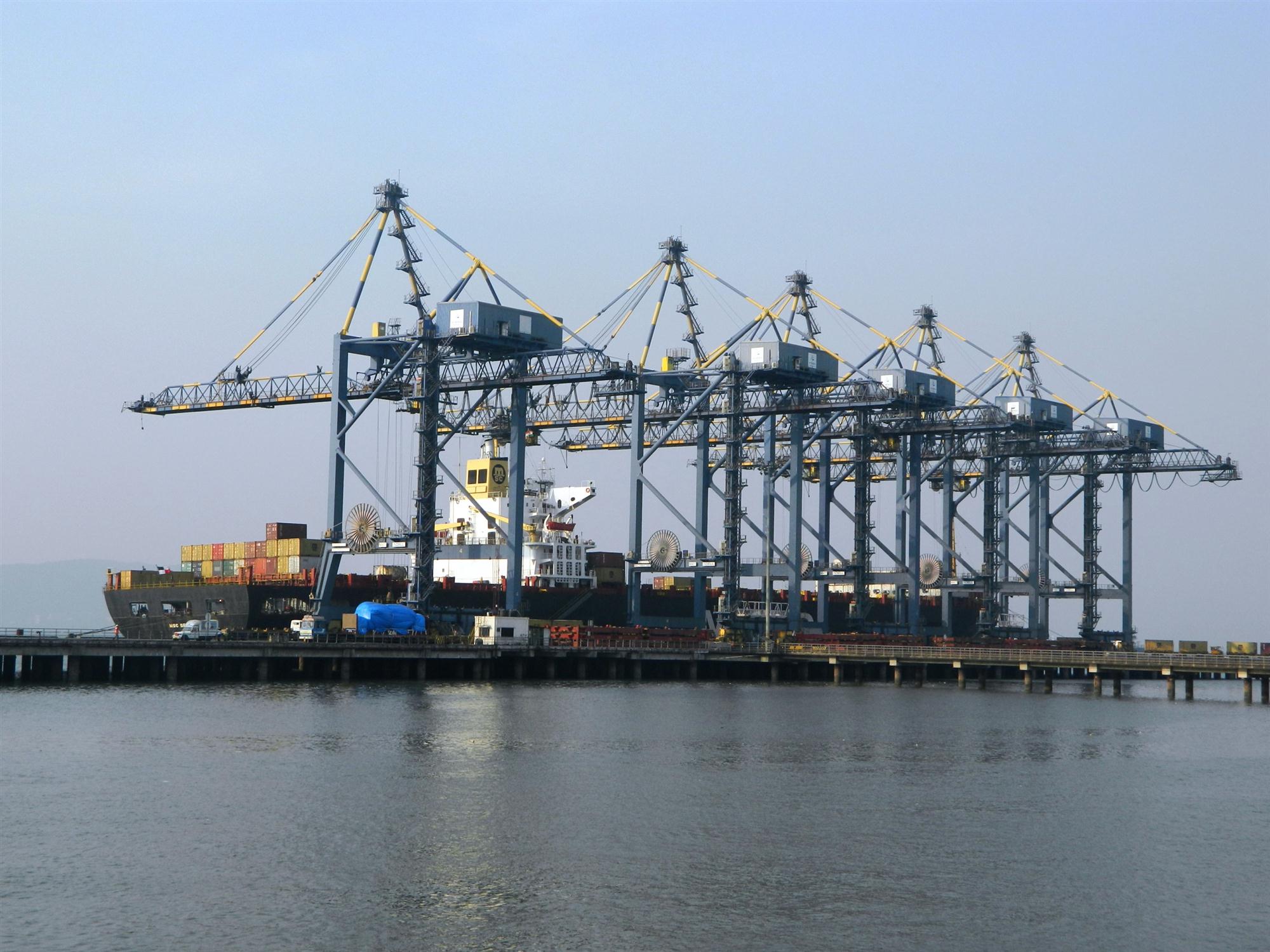India’s minister for shipping, road transport and highways, Nitin Gadkari, visited New York and other US cities in mid-July to attract US investments, technological and other expertise for India’s port development and other infrastructure projects.
Speaking to Asia Cargo News at the Indian Consulate General in New York, Gadkari said that the Indian government wanted to modernize and expand the infrastructure to flank the Indian economy’s high-growth trajectory. Besides developing the maritime infrastructure, he said, India was also keen to expand and upgrade its existing road, railway and waterways network.
Gadkari also met US politicians, corporate executives and others to forge cooperation in the field of what he described as “intelligent transport management.”

The minister called on US companies to invest in port development in India, asking them to provide expertise and know-how to build up a modern and efficiently operating distribution hub that would facilitate shipping and transportation, and sustain the growth momentum.
“We had a series of interactions with investors in the meetings organized by the Indo-American Chamber of Commerce, Business Council on International Understanding and Goldman Sachs. These interactions were a follow-up to the deliberations at the Maritime India Summit held in April in Mumbai, where a large number of US companies had evinced keen interest in promoting bilateral cooperation with India in the maritime sector,” Gadkari said, adding that his delegation had held discussions with the participating US on technology cooperation in infrastructure development, including ports, roads and highways.
Gadkari also pitched for the development of the country’s waterway network for transportation of people and goods, highlighting the good business opportunities for US companies experienced in port and waterway development. India is keen to overhaul its anachronistic transportation system.
“It has been easier and cheaper to transport materials from Mumbai to Dubai than from Mumbai to other ports within India,” Gadkari remarked. “We want to change that.”
India’s ambition of becoming an important shipping point for automobiles could get a fillip with the creation of industrial clusters. Twenty seven industrial clusters are to be created at ports, entailing a huge volume of funds, Gadkari said.
The country’s 12 major ports together handled 159.0 million tonnes of cargo in the first quarter of the current fiscal (April-June 2016-17), up 6.2% from 149.74 million tonnes in the previous fiscal year’s quarter, which recorded a growth of 4.5%.
Gadkari revealed that Indian government agencies were also collaborating with the private sector and introducing new technologies to remove the bottlenecks in cargo movement at its ports.
The Navi-Mumbai based Jawaharlal Nehru Port Trust (JNPT), the country’s largest container port, now boasts a container-tracking facility to monitor movement of cargo across the country’s western corridor; this will be followed by another technology-driven mechanism aimed at tracking containers from the port all the way to the inland container depots (ICDs). Supported by radio frequency identification (RFID), the project will monitor container movements and the trafficking facility as part of measures to improve the time taken for cargo clearances at the country’s ports.
According to Gadkari, the JNPT, which handles around 60% of India’s container traffic, also plans to install more container scanners in order to facilitate non-intrusive scrutiny of goods and considerably reduce inspection time. The customs department plans to install 44 scanners at various ports before March 2017 under a public/private partnership to run and manage the port.

JNPT handled more than 4.49 million TEUs of container traffic in 2015-16; the port has targeted some 10 million TEUs of containers in the next five years.
A newly started Direct Port Delivery facility is expected to benefit importers, with containers proposed to be directly delivered to the importers, instead of waiting in container freight stations for clearance, something that would take 9-11 days. This will significantly reduce costs for the importers on transaction, logistics and inventory.
There are a number of other measures being taken with a view to ease congestion at JNPT and speed up clearances in hours. The National Highways Authority of India (NHAI) is implementing a project to widen the NH4B highway, which connects the Jawaharlal Nehru Port to Mumbai-Pune Highway NH-4 and Mumbai-Goa Highway NH-17.
Rajeev Tandon, the customs chief commissioner who oversees operations at JNPT, recently said that the objective is to make examination of containers as non-intrusive as possible without compromising on security needs; the time taken for a shipment to get all customs clearances at a port had been reduced to 3.51 hours in 2015-16 from 76.15 hours in 2003-04 at JNPT.
Despite this improvement – according to the World Bank’s Logistics Performance Index, which measures international supply-chain efficiency, India’s ranking has risen to 35 in 2016 from 54 in 2014 - India has a lot of catching up to do to improve its supply-chain performance.
A World Bank report suggests that India’s current port capacity can be boosted by at least 35% simply by revamping port management practices, especially at the government-run major ports.
In the USA, Gadkari made a strong pitch for India’s maritime sector, pointing out that India was building new ports, constructing new berths/terminals at existing ports, and undertaking dredging work at ports to accommodate the new generation of mega-vessels.
India’s so-called “Sagarmala” programme encompasses a comprehensive development of the Indian maritime sector, with maritime logistics accounting for 90% of the country’s foreign trade by volume and 72%. “A total of 1 billion tonnes of cargo is handled across the nation’s more than 200 ports, including the smaller ones,” the minister said.
Under this programme, more than 150 projects have been identified for port modernization and new port development, port connectivity enhancement, port-led industrial development and coastal community development. According to the minister, these projects are expected to mobilize more than US$50 to 60 billion for infrastructure, and US$100 billion for industrial investment.
By Manik Mehta
International Correspondent | New York



